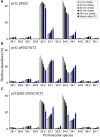Lipid Acyl Chain Remodeling in Yeast
- PMID: 26819558
- PMCID: PMC4720183
- DOI: 10.4137/LPI.S31780
Lipid Acyl Chain Remodeling in Yeast
Abstract
Membrane lipid homeostasis is maintained by de novo synthesis, intracellular transport, remodeling, and degradation of lipid molecules. Glycerophospholipids, the most abundant structural component of eukaryotic membranes, are subject to acyl chain remodeling, which is defined as the post-synthetic process in which one or both acyl chains are exchanged. Here, we review studies addressing acyl chain remodeling of membrane glycerophospholipids in Saccharomyces cerevisiae, a model organism that has been successfully used to investigate lipid synthesis and its regulation. Experimental evidence for the occurrence of phospholipid acyl chain exchange in cardiolipin, phosphatidylcholine, phosphatidylinositol, and phosphatidylethanolamine is summarized, including methods and tools that have been used for detecting remodeling. Progress in the identification of the enzymes involved is reported, and putative functions of acyl chain remodeling in yeast are discussed.
Keywords: acyl chain exchange; acyltransferases; lipid homeostasis; membrane lipids; phospholipases; transacylases.
Figures



References
-
- van Meer G, de Kroon AI. Lipid map of the mammalian cell. J Cell Sci. 2011;124(pt 1):5–8. - PubMed
-
- Schneiter R, Brugger B, Sandhoff R, et al. Electrospray ionization tandem mass spectrometry (ESI-MS/MS) analysis of the lipid molecular species composition of yeast subcellular membranes reveals acyl chain-based sorting/remodeling of distinct molecular species en route to the plasma membrane. J Cell Biol. 1999;146(4):741–754. - PMC - PubMed
-
- de Kroon AI, Rijken PJ, De Smet CH. Checks and balances in membrane phospholipid class and acyl chain homeostasis, the yeast perspective. Prog Lipid Res. 2013;52(4):374–394. - PubMed
Publication types
LinkOut - more resources
Full Text Sources
Molecular Biology Databases

